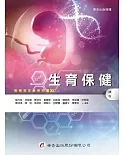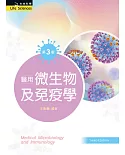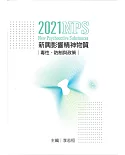推薦序
Our patients are citizens of the world. All of us have unique origins. The authors aptly provide differences with ethnic derivation relating to intraoral osseous and soft tissue morphology.
However, they also point out variations that exist due to diverse cultural backgrounds, precision genomic characteristics, access to care, and a myriad of confounding issues challenge us to
provide the best therapy for our patients. Leaving no stone unturned, differences in education, governmental regulations, and legal interpretations were also reviewed. All the above impact how
we treat our patients in the chair.
Another challenge in the future will be providing access to care for our most vulnerable populations. In 2017, The Asia-Pacific Forum on Sustainable Development produced a report that
outlined challenges and recommendations for inclusive and sustainable management or urbanization. Widening gaps for the poor, elderly, and migrants will occur with the approximately 400 million
people living in poverty in Asia and the Pacific if the inequality is not addressed. This problem is not unique to Asia, however. It is a world-wide issue of concern.
Congratulations to the authors and editors of this unique text. Understanding the differences (and similarities) of our Asian patients will help clinicians, educators, students, researchers,
and all members of the dental team, to provide enhanced periodontal and implant therapy for our patients. This provides greater insight for our Asian patients to individualize diagnosis,
treatment planning, and patient management. We are better for our patients only if we are continual learners.
Joan Otomo-Corgel, DDS, MPH, FACD, FICD
Associate Clinical Professor, UCLA School of Dentistry, Dept. of Periodontics
Past President, American Academy of Periodontology
Taiwan Academy of Periodontology has been founded for 30 years. Dr. Tony Deng, the chief-editor of the Journal of the Taiwan Academy of Periodontology has devoted not only in the publications
of regular papers, but also in executing of a specific issue (An Asian Aspect of Periodontology and Implantology) in Chinese and English. This issue emphasizes the aspects of oriental (Chinese)
in periodontology and implantology, since there are many ethnic considerations in daily dental practice including the pathogenesis/microbiology, the genetic components and esthetic concepts
etc. The English edition provides the international dentists with contemporary knowledge necessary to achieve the essential goal of practicing periodontics and implatology. The collection of
updated contents and detailed clinical images provides the basis for understanding and application of modern periodontal treatment and implant therapy. It is our hope that dentists will find
the materials to be a useful tool as they work through this newest edition and prepare for clinical practice.
This issue is grounded in evidence-based practice as it relates to the treatment of gingival and periodontal diseases, and placement of dental implants in oriental individuals. The chapters
progress in sections from essential background information, through the foundations of therapy assessment of diseases and conditions, treatment of diseases and conditions, and the results of
therapy. Throughout this sequence of question, the authors have collected and evaluated the best available evidence to support the information presented in every chapter.
This issue has provided the reader with an integrated presentation of facts, analysis of contemporary data, and patients’ treatment requiring periodontal and implant cares.
The half-life of scientific data is thought to be five years or less, with practice and experience in the profession, we shall be prepared to incorporate evidence-based information in the
practice of periodontology and implatology.
Chi-Cheng Tsai, DDS, PhD
Professor Emeritus, Chung Shan Medical University
President of the Taiwan Academy of Periodontology (1995 ~ 1997)
The first dean of the College of Dental Medicine, Kaohsiung Medical University
Time passes quickly and this year is the 30th anniversary of the Taiwan Academy of Periodontology. Since we initiated the Academy, our knowledge of periodontology has grown to a tremendous
degree. Not such a long time ago, I was invited to give a lecture on implantology. In anticipation, I opened the first edition of the textbook Clinical Periodontology written by Jan Lindhe; its
content was so different to the latest editions. The name of the book has now changed to Clinical Periodontology and Implant Dentistry and the content on implant dentistry has become a major
part of the book. Basic knowledge regarding periodontology and implantology has accumulated and increased but without significant modifications.
Four years ago our academy issued an edition of this book in Chinese. Since then there have been some concepts that have been modified and updated and there is now good scientific evidence on
periodontitis patients and their therapy that links the disease in oriental populations and the disease in western populations. Nevertheless there are some unique clinical features that we in
Taiwan face in our daily practice. These include the thin periodontium biotype, a comparatively short root length, a relatively narrow ridge and the protruding pre-maxilla, all of which are
more prevalent in oriental individuals. Based on these differences, we have collected updated information on current periodontology and implantology, republished this book four years later and
also issued the latest English edition. I would like to thank the efforts of the editor-in-chief Dr. Tony Shing-Zeng Dung and what has been achieved. I would also like to thank the many editors
and clinicians who have contributed their knowledge and time to this book. In this I represent all members of our Academy when I say thanks everyone of you and a happy 30th anniversary to the
Taiwan Academy of Periodontology. I hope this book will impress all of you and that the knowledge in it will be helpful as you practice during your dental career.
Shih-Jung Lin
President of Taiwan Academy of Periodontology
October, 2017


































